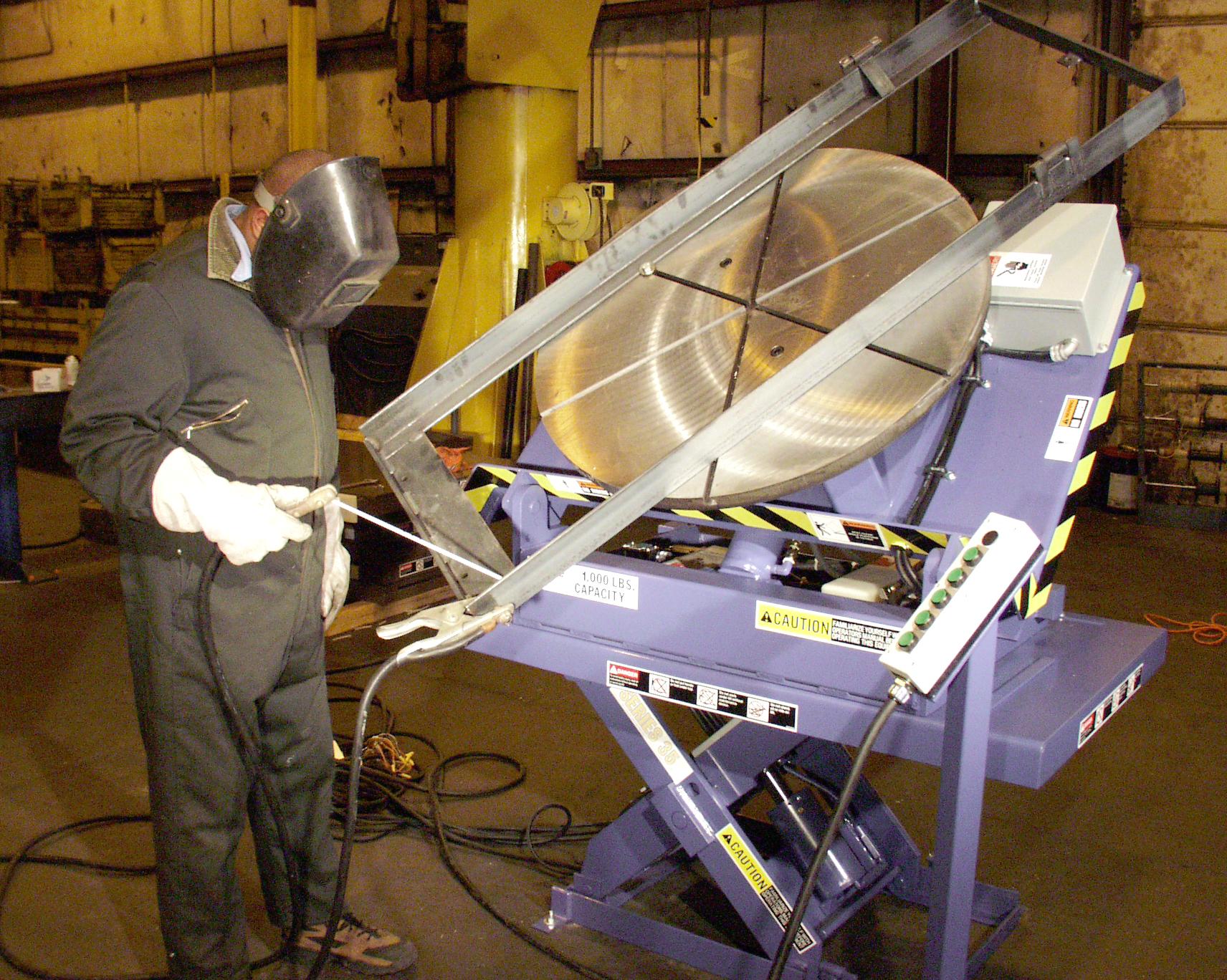Ergonomic Lift Tables for Ergonomic Applications

Ergonomics is simply the science of designing work to fit the capabilities of the worker. Because worker capabilities vary due to differences in age, physical condition, strength, gender, stature, etc., material handling lift manufacturers like Autoquip design and manufacture a wide range of ergonomic lift tables which can compensate for these differences by bringing the work to each worker’s unique ergonomic “power zone” (above the knees, below the shoulders, and within 18” of the torso). By improving the fit between the demands of the work tasks and the capabilities of the workers, ergonomic lift tables have benefited many operations by:
- Reducing or preventing injuries
- Increasing productivity & product quality by eliminating product bottlenecks and reducing error rates & rejects
- Decreasing worker efforts and improving worker morale
- Lowering costs by reducing or eliminating use of medical services for musculoskeletal disorders (MSD’s), workers’ compensation claims, excessive employee turnover, absenteeism, and re-training
Manual material handling tasks have the potential to expose workers to physical risk factors. If these tasks are performed repeatedly or over long periods of time, they can lead to fatigue and injury. The main risk factors or conditions associated with the development of injuries in manual material handling tasks include:
- Awkward postures (bending, twisting, etc.)
- Repetitive motions (frequent reaching, lifting, carrying, etc.)
- Forceful exertions (pushing, pulling, carrying, lifting heavy loads)
Again, these risk factors have historically represented the largest single contributor to worker injuries in the United States, and the application of good ergonomic lifting solutions can reduce these incidences and improve productivity. There are a wide variety of material handling lifts which serve to reduce worker exposure to these risk factors. These designs fall into the primary categories of scissor lift tables, tilt lifts, and turntable lifts and have the following characteristics and impact on ergonomics at the workstation:
Scissor Lift Tables
Scissor Lifts can generally be described as industrial scissors mechanism which move vertically to raise or lower the height of the work (or worker) in order to place the work at an appropriate ergonomic height (between the knees and shoulders, and head tilted forward no more than 30 degrees). Industrial scissor lifts can be manual or powered, portable or stationary, and can be actuated mechanically, hydraulically, or pneumatically – depending on available utilities & other aspects of the work environment. Scissor lift tables help to eliminate harmful bending and repetitive or excessive lifting.
Tilt Lifts
Industrial tilt lifts are devices which do exactly as their name implies – tilt the work through a range of angular motion to place the work at an appropriate ergonomic height (between knees and shoulders) and distance from the worker (18”). Industrial tilt lifts can be portable or stationary, and can be actuated mechanically, hydraulically, or pneumatically – depending on available utilities & other aspects of the work environment. Tilt lift tables assist in the elimination of injuries due to harmful bending and repetitive reaching.
Turntable Lifts
Industrial turntable lifts rotate the work to the worker. Industrial turntable lifts are designed as manual or powered and are often mounted to lifts for the build-up and break-down of palletized loads, or when handling smaller unit loads. Turntables help to improve productivity and reduce injuries by eliminating repetitive walking around the load, harmful reaching, and the forceful exertion of pushing or pulling loads into place.
What to Look For
How can a person recognize whether an ergonomic problem, or problems, exists within their facility? How do you identify the potential need for material handling equipment to improve productivity and/or safety? The best place to start is to walk through the manufacturing plant or operating facility and look for any number of these indicators:
- Workers that squat, reach, or stretch to gain access to their work
- Any repetitive assembly tasks
- Heavy work pieces moved or positioned
- Large work pieces that require operation on more than one surface
- Workstations with step stools, or extension arms for tools
- High volume production machines
- Workstations modified by employees (without authorization) to make work easier
Good ergonomics for efficiency and comfort makes great sense. For more information on the right ergonomic lifting solution for your operation, contact Autoquip for an assessment of your process or operations.